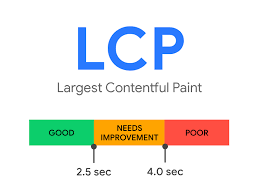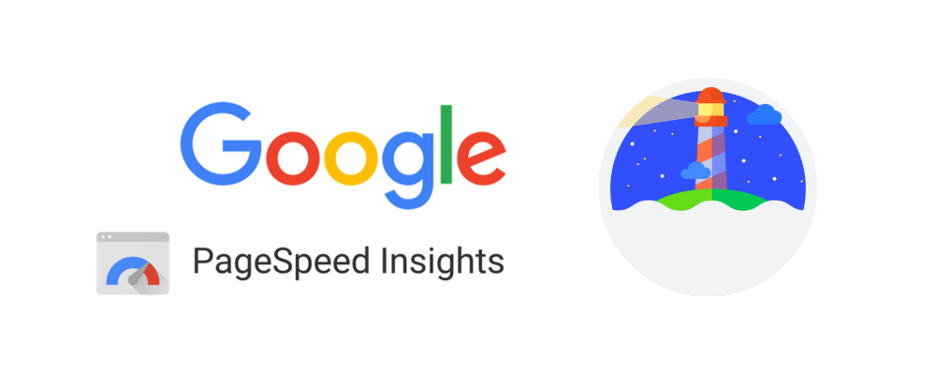Post at a Glance
Website performance is a critical factor for both user experience and search engine rankings. A slow-loading website can frustrate users, increase bounce rates, and harm your SEO efforts. Fortunately, tools like Google PageSpeed Insights to Optimize Website Performance offer actionable insights to enhance your site’s speed and efficiency. This comprehensive guide will walk you through how to use Google PageSpeed Insights to Optimize Website Performance, ensuring your website runs smoothly and ranks higher.
Insights on Google PageSpeed Insights
What is Google PageSpeed Insights?
Google PageSpeed Insights is a free tool provided by Google that analyzes your website’s performance on both mobile and desktop devices. It generates a score from 0 to 100, with higher scores indicating better performance. More importantly, it provides detailed recommendations to improve loading times, user experience, and overall site efficiency. By leveraging Google PageSpeed Insights to Optimize Website Performance, you can identify bottlenecks and implement fixes that enhance your site’s speed.
Why Website Performance Matters
Before diving into how to use Google PageSpeed Insights to Optimize Website Performance, let’s understand why speed matters. Studies show that 53% of mobile users abandon a site that takes longer than three seconds to load. Google also uses page speed as a ranking factor, particularly for mobile searches. A faster website improves user satisfaction, reduces bounce rates, and boosts conversions. By using Google PageSpeed Insights to Optimize Website Performance, you align your site with Google’s expectations and user demands.
Step-by-Step Guide to Using Google PageSpeed Insights to Optimize Website Performance
Step 1: Accessing Google PageSpeed Insights
To start using Google PageSpeed Insights to Optimize Website Performance, visit the official website at pagespeed.web.dev. Enter your website’s URL in the provided field and click “Analyze.” The tool will evaluate your site and generate a report for both mobile and desktop versions within seconds. The dual analysis is crucial, as mobile performance is increasingly important for SEO.
Step 2: Understanding the PageSpeed Score
Once the analysis is complete, Google PageSpeed Insights assigns a score based on several performance metrics. Scores are color-coded:
- 0–49 (Red): Poor performance, requiring immediate attention.
- 50–89 (Orange): Needs improvement.
- 90–100 (Green): Excellent performance.
The score is derived from metrics like First Contentful Paint (FCP), Largest Contentful Paint (LCP), and Cumulative Layout Shift (CLS). These metrics measure how quickly content loads, how long it takes for the main content to appear, and how stable the page layout is during loading. Understanding these metrics is key to using Google PageSpeed Insights to Optimize Website Performance effectively.
Step 3: Analyzing Core Web Vitals
Google PageSpeed Insights emphasizes Core Web Vitals, which are critical for user experience and SEO. These include:
| Largest Contentful Paint (LCP): Measures the time it takes for the main content to load. Aim for under 2.5 seconds. |  |
| First Input Delay (FID): Tracks the time it takes for a page to become interactive. Target under 100 milliseconds. |  |
| Cumulative Layout Shift (CLS): Assesses visual stability. Keep CLS below 0.1. |  |
By addressing issues in these areas, Google PageSpeed Insights to Optimize Website Performance helps you meet Google’s performance standards and improve user satisfaction.
Step 4: Reviewing Diagnostic Recommendations
The real power of Google PageSpeed Insights to Optimize Website Performance lies in its diagnostic section. This part of the report highlights specific issues, such as large image files, unminified CSS/JavaScript, or server response times. Each recommendation includes a description and steps to resolve the issue. For example, if the tool flags large images, it may suggest compressing them or using modern formats like WebP.
Step 5: Implementing Optimization Strategies
Based on the recommendations from Google PageSpeed Insights to Optimize Website Performance, here are actionable strategies to improve your site:
- Optimize Images: Compress images using tools like TinyPNG or convert them to WebP format. Ensure images are appropriately sized for their display dimensions to reduce load times.
- Minify CSS, JavaScript, and HTML: Remove unnecessary characters, comments, and whitespace from code to reduce file sizes. Tools like UglifyJS or CSSNano can help.
- Leverage Browser Caching: Set cache-control headers to store static resources locally on users’ devices, reducing server requests.
- Enable Compression: Use Gzip or Brotli to compress files before sending them to users’ browsers.
- Reduce Server Response Time: Optimize your server by upgrading hosting plans, using a Content Delivery Network (CDN), or improving database queries.
- Eliminate Render-Blocking Resources: Defer non-critical CSS and JavaScript to ensure the page loads quickly.
- Improve Mobile Performance: Since mobile traffic dominates, prioritize responsive design and fast-loading mobile pages.
By implementing these fixes, you can significantly boost your site’s performance and make the most of Google PageSpeed Insights to Optimize Website Performance.
Common Challenges and Solutions
Using Google PageSpeed Insights to Optimize Website Performance may reveal challenges, especially for complex websites. Here are some common issues and how to address them:
- Third-Party Scripts: Ads, analytics, or social media widgets can slow down your site. Consider lazy-loading these scripts or removing non-essential ones.
- Complex Themes: Some WordPress themes or CMS templates include bloated code. Switch to lightweight themes like Astra or optimize your current theme.
- Hosting Limitations: A slow server can bottleneck performance. Invest in quality hosting or a CDN like Cloudflare to distribute content efficiently.
Tackling these challenges ensures that Google PageSpeed Insights to Optimize Website Performance delivers maximum value for your site.

Monitoring and Maintaining Performance
Optimizing your website isn’t a one-time task. After implementing changes based on Google PageSpeed Insights to Optimize Website Performance, regularly monitor your site’s performance. Re-run the tool every few weeks or after significant updates to ensure your site maintains high scores. Additionally, use complementary tools like GTmetrix or Lighthouse for deeper insights into specific issues.
The SEO Benefits of Using Google PageSpeed Insights
Optimizing your website with Google PageSpeed Insights to Optimize Website Performance directly impacts SEO. Google prioritizes fast-loading, user-friendly websites in its rankings. A high PageSpeed score correlates with better user engagement metrics, such as lower bounce rates and longer session durations, which signal quality to search engines. Furthermore, a faster site improves crawl-ability, allowing search engines to index your content more efficiently.
Real-World Example: A Case Study
Consider a small e-commerce site struggling with a PageSpeed score of 45 on mobile. After running Google PageSpeed Insights to Optimize Website Performance, the site owner discovered large, un-optimized images and render-blocking JavaScript. By compressing images, deferring scripts, and enabling browser caching, the score improved to 85 within two weeks. This led to a 20% increase in organic traffic and a 15% boost in conversions, demonstrating the power of Google PageSpeed Insights to Optimize Website Performance.
Tips for Long-Term Success
To sustain the benefits of Google PageSpeed Insights to Optimize Website Performance, adopt these best practices:
- Regular Audits: Schedule monthly performance checks to catch new issues early.
- Stay Updated: Google frequently updates its algorithms and tools, so keep abreast of changes to PageSpeed Insights.
- Test Across Devices: Ensure your optimizations work for both mobile and desktop users.
- Prioritize User Experience: Beyond speed, focus on delivering a seamless, engaging experience.
Using Google PageSpeed Insights to Optimize Website Performance

PageSpeed Insights is a game-changer for website owners, developers, and SEO specialists. By analyzing your site’s performance, understanding Core Web Vitals, and implementing targeted fixes, you can enhance user experience, boost SEO rankings, and drive conversions. Start leveraging Google PageSpeed Insights to Optimize Website Performance today to unlock your website’s full potential. With consistent effort and monitoring, your site can achieve lightning-fast speeds and deliver a delightful experience to users.
REQUEST SEO SERVICES
Looking for web design or SEO services? Fill out this short form and we’ll contact you to talk about your project needs. Help us understand your vision so we can deliver a tailored, user-friendly design that effectively represents your brand
Related Posts:

















